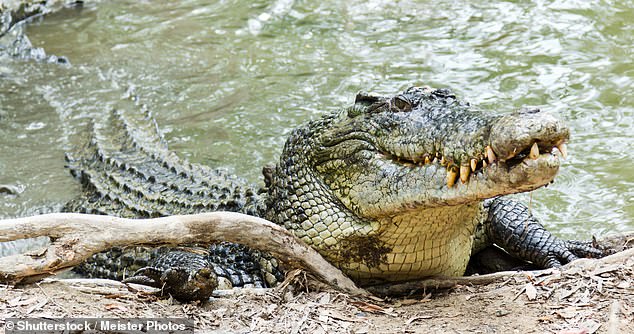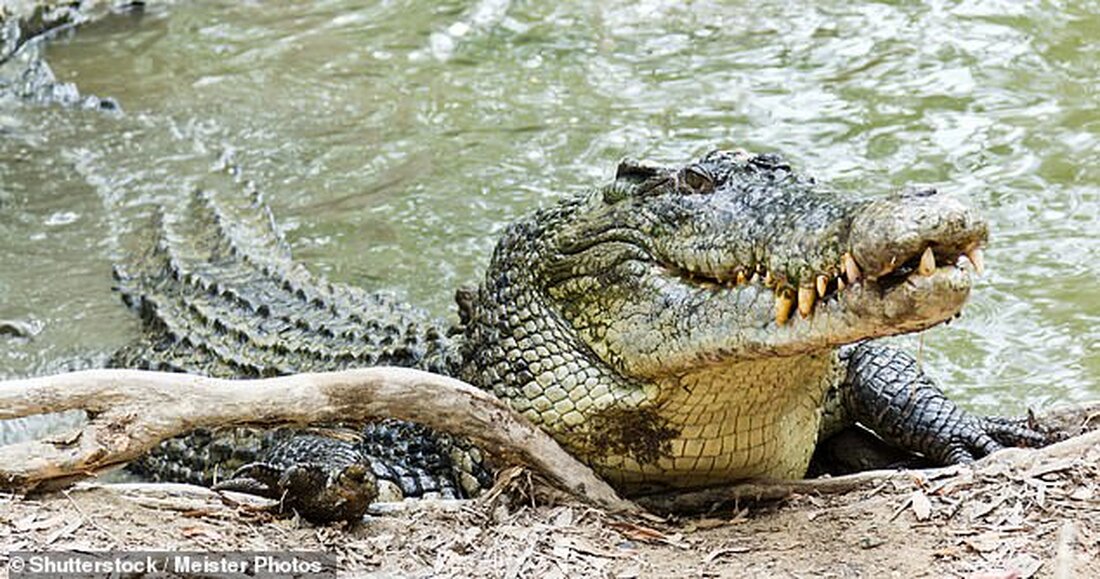Crocodiles, salamanders and turtles may hold the secret to people living until they are 150, experts hope.
For decades, scientists have struggled to find an anti-aging potion.
Experiments with cold-blooded animals like turtles, which are known to live longer than other animals their size, could change their fate.
Researchers at Michigan State University hope they will discover “traits” that can also be targeted in humans.
The team has yet to pinpoint potential longevity targets, and any significant discovery could be years away, however.

A fearsome crocodile's armored skin may partly explain why they have evolved such long lifespans, scientists say, and beyond that, unraveling the biology behind the process could one day help extend human lifespans
Lead researcher and biologist Professor Anne Bronikowski said: “Understanding the comparative landscape of aging in animals can reveal flexible traits that could prove to be worthy targets for biomedical studies related to human aging.”
Co-author Professor David Miller from Pennsylvania State University added: "If we can understand why some animals age more slowly, we can better understand aging in humans."
He added that, in theory, it could help inform conservation strategies for threatened or endangered species.
Published in the journal Science, experts examined 77 different species of reptiles and amphibians in habitats around the world.
Some showed signs of “negligible aging.”
While all living organisms age and die, not all creatures follow the same pattern of weakening and decay leading to old age and death.
Professor Miller added: "Negligible aging means that if the chance of an animal aged 10 dying in a year is 1 per cent, if it lives to 100 the chance of dying is still 1 per cent."
“In contrast, for adult women in the United States, the risk of dying within a year is about 1 in 2,500 by age 10 and 1 in 24 by age 80.
“If a species exhibits negligible senescence (deterioration), aging simply does not occur.”
Researchers largely attributed this to turtles, which had hard shells to protect them from being eaten. Crocodiles are protected by their thick scales, while salamanders rely on their poisonous skin.
Obviously none of this applies to humans.
But scientists believe other answers to how to defy aging may be lurking deeper within their bodies.
Today's findings also help overturn the previous scientific consensus that linked the long lifespans of some reptiles to their slower metabolisms.
Because cold-blooded creatures get energy from the environment, they don't need to eat as much, unlike mammals like humans, who have to burn calories to keep warm, resulting in a slower metabolism.
This was previously thought to be the key to why some reptiles can live up to 190 years.
However, the new analysis found that when their 77 species were compared to similarly sized warm-blooded creatures, there was no link between slower metabolism and longer lifespan.
The world's oldest land animal is currently a giant tortoise in the Seychelles named Jonathan, who is 190 years old.
Data from the Office of National Statistics shows that life expectancy at birth in the UK is 79 years for men and just under 83 years for women.
But lifespans of 150 years, once considered a distant dream, are now nearing reality, according to some scientists.
In March this year, leading aging experts said children born in 2070 could live up to 150 years old thanks to advances in reverse-aging technology.
This statement follows a groundbreaking study earlier this month that managed to safely reverse the aging process in older mice.

 Suche
Suche
 Mein Konto
Mein Konto

